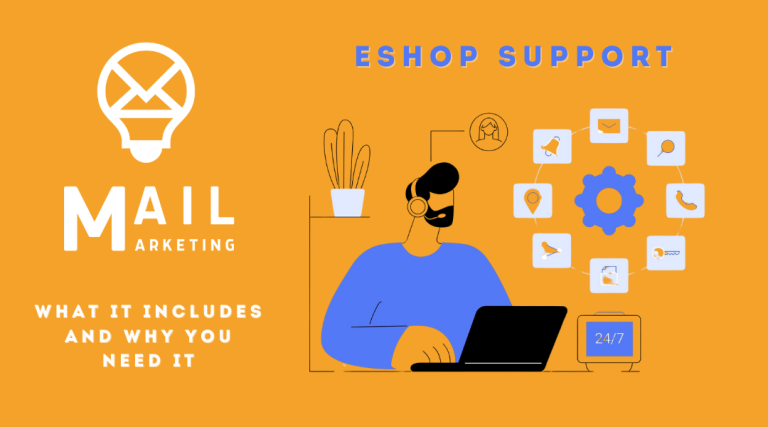Why your subscribers are deleted
and how to stop it
Are you losing subscribers to your newsletter and wondering why? Losing subscribers can be frustrating and detrimental to the growth of your business. In this article, we'll discuss some common mistakes that could cause subscribers to unsubscribe and provide practical solutions for correcting them.
Error #1: Your content is not relevant to the subscriber's interests or does not provide any value
When it comes to email marketing, providing relevant and valuable content is essential for maintaining subscriber interest and loyalty. If your content is not tailored to their interests or provides no value, it's no wonder they unsubscribe from your newsletter.
To avoid this mistake, start by getting to know your audience and their interests. Use the segmentation to group subscribers based on factors such as demographics, behaviours and preferences, then tailor your content to the interests of each group. For example, if you sell clothing online, you could send different newsletters to subscribers based on their gender and shopping or browsing history on the site.
It is also important provide value in your newsletters. This could mean offering exclusive discounts or promotions, providing useful advice or tips related to your industry. When your subscribers see that your newsletters provide value and meet their needs, they are much more likely to stay engaged and want you to communicate with them.
A related study called "How segmentation and personalization can boost email marketing ROI" argues for the importance of providing valuable content, which found that personalized and segmented emails generate 58% of all email revenue. This shows that taking the time to tailor your content to your audience can have a significant impact on your email marketing success.
To provide relevant or high-value content in your email marketing, you can follow these practical steps:
Define your target audience: Identify who your target audience is and what their interests and needs are. This will help you tailor your content to their needs and interests.
Develop a content strategy: Once you know your target audience, develop a content strategy focused on delivering value to your subscribers. Your content should be informative, educational and engaging. Use visual elements, such as images or videos, to make your content more interesting.
Conduct surveys and ask for feedback: Ask your subscribers for feedback on the content you provide. Conduct surveys to find out what they like and dislike about your emails. Use this feedback to improve your content and tailor it to their needs.
Testing and analysis: Try different types of content to see what works best for your audience. Analyze open and click-to-view ratios to see which emails are performing well and which need improvement.
By following these steps, you can improve the quality of your content and maintain the loyalty of your subscribers. Remember, delivering value to your subscribers should be your top priority.
A related study found that subscribers are more likely to stay engaged with email content that is personalised and relevant to their interests.
Error #2: You are sending too many emails
A common reason why subscribers may unsubscribe from your newsletter is the frequency of your emails. If you send too many emails in a short period of time, it can be considered unwanted or even annoying. This can lead to a negative perception of your business and eventually lead to unsubscribes.
To stop losing subscribers, you should segment your email list and send targeted emails based on subscribers' interests and preferences. This way, your subscribers only receive emails that are relevant to them, reducing the chance of them feeling overwhelmed. So it is not just a matter of frequency but also of quality/relevance.
Another way to reduce the frequency of your emails is to give your subscribers the option to choose how often they receive emails from you. This can be done by giving them the option in their emails instead of unsubscribing to update their profile where they can choose how often they receive emails, daily, weekly or monthly.
Related study on this topic is the "Email Marketing Benchmarks". According to its findings, the average email open ratio is 17.92%, and the average click-to-view ratio is 2.69%. These values may vary depending on factors such as industry and email frequency, so it's important to monitor your own email metrics and adjust your email frequency accordingly.
Error #3: You are not sending enough emails
On the other hand, if you don't send enough emails, your subscribers may forget about you and lose interest.
Sending too few emails or not sending them often enough can lead to low engagement rates and cause subscribers to forget your brand or lose interest in your content. According to one study, companies that send more than 30 emails per month see their email open rates increase by almost 20% compared to companies that send less than six emails per month.
For example, if you only send a monthly newsletter, your subscribers may not feel connected to your brand or content. They may even forget that they have subscribed to your newsletter and eventually unsubscribe. On the other hand, if you send more frequent emails, such as weekly or twice a week, you'll stay top of mind with your subscribers and keep them engaged with your content.
To fix this error, you need to send more emails on a regular basis. However, you should also make sure that the content you send is valuable and relevant to your subscribers. You don't want to overload them with too many emails that they don't find useful or interesting. Instead, try to find a balance between frequency and quality.
Mistake #4: You are always trying to sell them something
If your subscribers feel that you are only interested in selling them something, they may unsubscribe.
One of the most common reasons why subscribers unsubscribe from newsletters is that they feel they are constantly bombarded with emails trying to sell them something. If your newsletter is always promoting your products or services, your subscribers may start to feel that you are sending them spam and, as a result, they may unsubscribe from your list.
Provide valuable content and combine promotional offers. Focus on providing valuable content that your subscribers will find interesting and useful. Combine promotional offers with your content, rather than solely promoting a product or service sale. For example, if you own a pet supply store, you can send a newsletter with helpful tips for caring for your pets and include a special offer for your products or services at the end of the newsletter.
According to a study, newsletters that provide a good combination of content and promotions tend to have higher engagement rates and lower unsubscribe rates. Therefore, focus first on providing value to your subscribers and then on promotions.
Error #5: They never subscribed or didn't realise they were subscribed to your email list
This can happen if you add someone to your email list without their consent or if your subscription process is not clear. It is important to remember that sending emails to people who did not participate or did not expect to receive emails from you can not only lead to unsubscribing, but can also damage your sender's reputation and potentially lead to legal issues.
To correct this mistake, make sure your registration process is clear and transparent. Use an email confirmation process, where subscribers must confirm their subscription before being added to your email list. This not only ensures that subscribers know what they are subscribing to, but also helps eliminate fake or inactive email addresses. In addition, be sure to only add subscribers who have explicitly opted in to receive emails from you.
A relevant study on this issue is "The importance of consent in email marketing". This study found that emails sent to subscribers who do not explicitly opt out of the resulted in higher rates of erasure and lower loyalty rates. It also found that the use of a double-confirmation subscription process can lead to higher loyalty rates and lower delisting rates.
By implementing a clear and transparent sign-up process, you can ensure that subscribers know what they are signing up for and are more likely to interact with your emails.
Conclusion
Losing subscribers can be a frustrating and damaging experience for any business. However, avoiding common mistakes, such as sending too many emails, not providing valuable content, difficulty unsubscribing, not segmenting your audience correctly, not clarifying how your subscribers signed up and always trying to sell something, you can keep your subscribers engaged and active on your list by applying practical solutions to correct these errors, such as providing value-driven content, creating clear and easy-to-use unsubscribe links, segmenting audiences based on their interests, and focusing on building relationships rather than driving sales, businesses can not only retain their current subscribers but also attract new ones. By understanding the reasons why subscribers unsubscribe and taking the necessary steps to correct them, businesses can build a more engaged and loyal subscriber base, leading to increased growth and success in the long run.
If you found all of the above useful, ask us for a free consultation session 15-30 minutes to show you how we can help you clear your list. Some examples you may have already seen in case studies Just book your seat with us.



